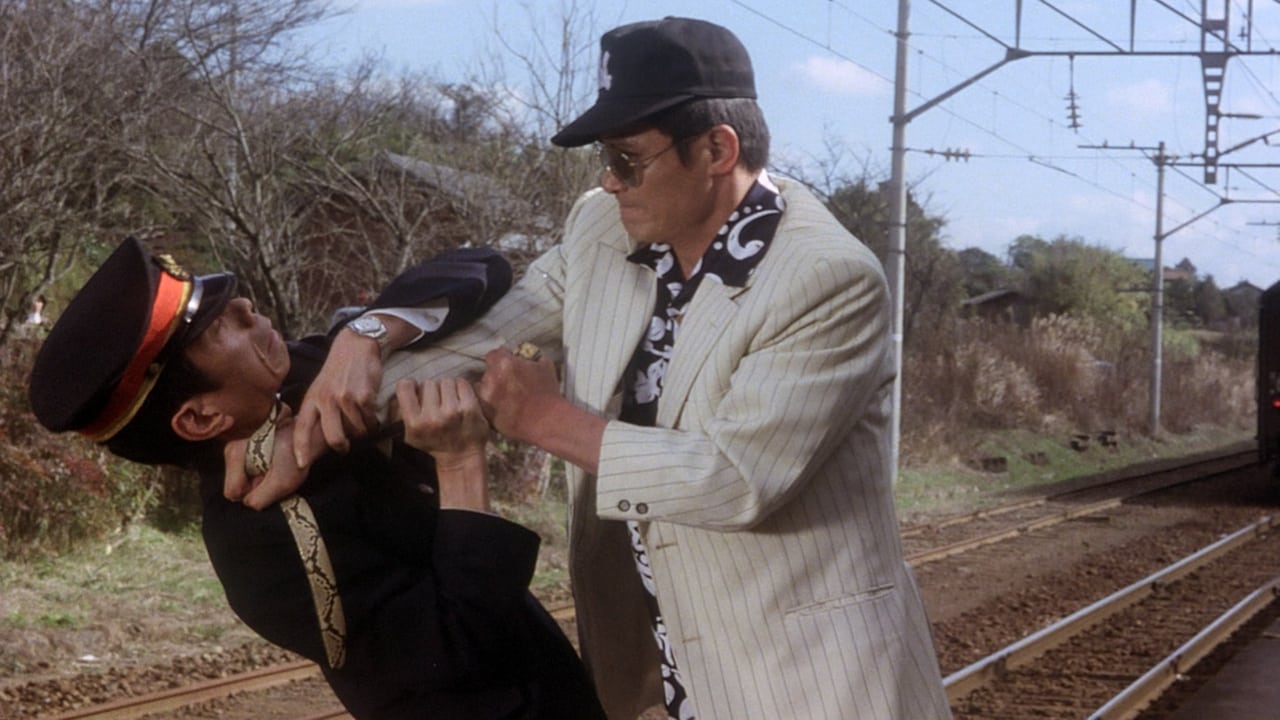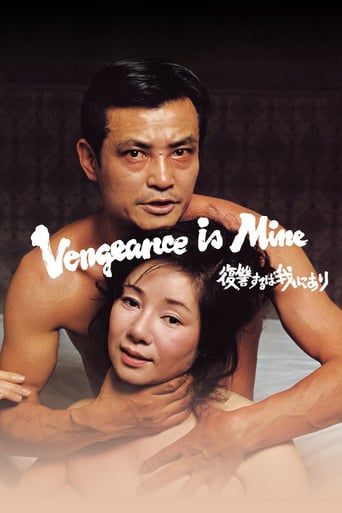

I think this is a new genre that they're all sort of working their way through it and haven't got all the kinks worked out yet but it's a genre that works for me.
... View MoreReally Surprised!
... View MoreGood films always raise compelling questions, whether the format is fiction or documentary fact.
... View MoreI enjoyed watching this film and would recommend other to give it a try , (as I am) but this movie, although enjoyable to watch due to the better than average acting fails to add anything new to its storyline that is all too familiar to these types of movies.
... View MoreViewed on DVD. Studio Director Shouhei Imamura delivers a gruesome tale about the product of a dysfunctional family who ends up as a remorseless killer (as well as an accomplished minor con artist). This Shochiku programmer is apparently based on a documentary-style book which, in turn, is based on actual events. The photo play tries to embrace and regurgitate both data sources which results in a schizophrenic movie that suffers from excessive "ancestor worship." Initially, the Director tries combining flashbacks with documentary-style filming (which never play well together), but quickly abandons this approach (much to the viewer's relief who would otherwise need a spreadsheet to keep track of things!). Early murder scenes are unintentionally hilarious, as characters just plain refuse to die despite receiving multiple fatal wounds. In between later murders, the killer freely roams city streets undisguised (except for sunglasses) when wanted posters are literally plastered everywhere! (A death wish; a plea for help; or just a dumb screen script?) Actors and actresses lack on-screen chemistry. Rather than forming an ensemble, each seems to be waiting to deliver lines instead of listening and reacting to the dialog of others. The lead actor does not seem to be in his element when playing a murderer, but, instead, when playing a chameleon-like swindler who can change modes of deception on the fly! Nude scenes and gratuitous simulated sex are inserted here and there to spice things up (and boost juvenile audience appeal). Cinematography (semi wide screen, color) is good except for the closing scenes (see below). Restoration is very good. Subtitles for opening credits are near-white letters on top of white Japanese characters making them challenging/impossible to read. Dialog subtitles are sometimes too long given their screen flash rates. Yup, the English title (widely used) for this movie does not fit, but it is catchy. The ending is just plain weird (and seems to be tacked on as well as poorly executed and photographed). But, then again, there could be a message hidden in there--somewhere! Not recommended (unless you first park your brain beside your disc player). WILLIAM FLANIGAN, PhD.
... View MoreAll the Imamura's I've seen have that one moment. A moment which becomes a cinematic emblem, a token of memory that not only stays in the mind but starts to typify everything. Needless to say, there is a moment like that in this film, and without giving away too much, it involves a transition between scenes and a staircase. The simplest of moments, but the profoundest all the same, where home and the road meet, the lost and the forgotten. It's heartbreakingly beautiful in its impact as it shows the bittersweet death of hope in life that has turned into a vacuum of cessation and a mere series of wandering, swerving accidents.As for Ken Ogata's Iwao, he is a convincing characterization, mundane enough to be completely ordinary, charismatic enough to enable him to transform himself into someone completely unpredictable in his disconnect and for us to walk the distance with him. The genre tends to overemphasize the latter quality – the unique, the mysterious, the alluring. Imamura's way of seeing the world strikes a successful balance between the two extremes. Iwao is, as said, just like anyone else, but still like no one else. He is formed as lacking in perceivable depth. He does, and is almost entirely void of theatrical reaction. This way we invest in and project our preconceptions into the character. Sure, that's the meme in depicting sociopaths, but Imamura is able to use this wisely and without gloating.The Masters of Cinema have released this on Blu-ray (region B). It's a rare miss for them as it has lots of combing, and I think I'll sit this one out and wait for the possible Criterion upgrade (although I prefer the colour grading of the MoC master to that of the Criterion).It seems that IMDb now displays my vote for this title; it appeared after I made a minor edit on the text. I'm not partial to it, since it guides the reader's perception on the writer's opinion often more than the text itself, but there's nothing I can do about it at the moment.
... View MoreI can't honestly say that I 'got' the film 100%, but it sure kept me glued to the screen it's 2+ hour running time. Starts off as a docudrama look at a serial killer and his exploits, which is fine but you've been there before. However, via fractured narrative and by focusing far more on the killer, his family, and the characters they interacts with, the film immediately breaks away from the tradition of giving equal (if not more) time to the investigation. But even the in-depth look at the past and present of the antagonist doesn't quite explain his motivations. Expecting a 'pat' resolve, and not finding it herein, would be my only gripe with the film, which otherwise is a strange and hypnotic beast of rare quality, hard to pigeon-hole or categorize by the end, even if I thought I had it pegged at the beginning. The director, Shohei Imamura, who had a pretty wild style in his feature films, had been doing documentaries for a decade before he returned to fiction with this film. Maybe the documentary set-up was a deliberate ploy to keep the audience off-balance as Imamura undermines and/or breaks away from the genre every so often. At least 2 scenes will immediately pop out of the film as if they belong to another film altogether, and yet it all combines to great, surreal and creepy effect, when you consider the breadth of the themes and subplots and undercurrents introduced and explored. Whew! It was enough to make my head spin for a while (even so, I'm pumped to see it again).
... View MoreAmbiguously-titled and multi-faceted, this is probably the best film I've watched so far from the director (who, coincidentally, died just a couple of days prior to my first viewing of it!).This is far more than merely the case history of a criminal; indeed, despite being based on true events, the film still emerges as typical Imamura in its revolving around a family unit, the multiple characters, its emphasis on sex and suggestion of incest, the brothel milieu and the elliptical narrative! VENGEANCE IS MINE also marked the director's return to feature film-making, having spent the previous 11 years shooting documentaries subsequent to the failure of his 1968 epic THE PROFOUND DESIRE OF THE GODS (1968; which I had recorded some time ago off Italian TV, but the tape unfortunately was scrambled!).As always, the entire cast delivers excellent performances and many of them were duly honored for their work here. The film is long but never boring, indeed fascinating in its methodical, deliberately-paced approach and especially the clinical detail of the chilling crimes (though some of these actually occur off-screen). Imamura inserts several subtle instances of surrealism (most notably a series of freeze-frames at the conclusion) without them appearing incongruous in the face of the realism that is otherwise demonstrated.Alex Cox's video introduction on the MoC/Eureka SE DVD is brief but insightful, but Tony Rayns' full-length Audio Commentary and the accompanying 36-page booklet are customarily comprehensive.
... View More